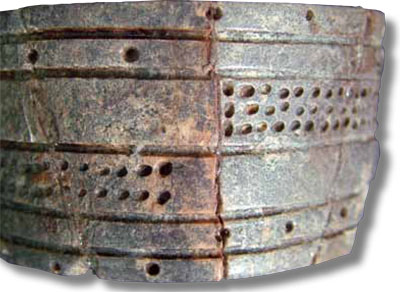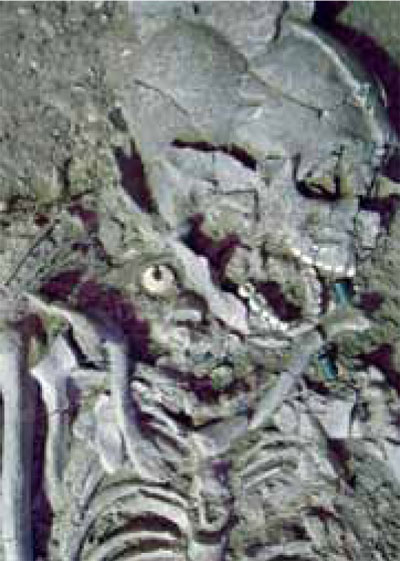

A piece of an ancient ivory bracelet was recently discovered during the fourth excavation season at the Late Prehistoric/ Early Historic site of Promtin Tai in the Lopburi region of central Thailand. It is one-of-a-kind and a distinctive Iron Age (500 BC–AD 500) artifact in unusually good condition. The fragment was found in an undisturbed occupational layer together with other classes of cultural remains including beads, potsherds, animal bones, and spindle whorls. Right below the occupational layer were human burials where a number of skeletal remains were recovered. Each burial contained a variety of grave goods ranging from beads of agate, carnelian, glass, and shell, to ceramic vessels, iron tools, precious stone bracelets, bronze bracelets, bronze toe rings, bronze finger rings, and a zoomorphic stone bead. Simple, plain ivory bracelets were found intact, adorning the arms of the dead. However, no other carved ivory bracelets like the piece shown above were recovered.
The carefully carved bracelet, about 6 cm in diameter and 0.3 cm thick, is decorated with a series of punched holes arranged in rows demarcated by evenly spaced horizontal lines. The design is clearly discernible: rows of incised dots extend for some length in the middle registers of the bracelet. Additional rows of more widely spaced dots were carved in the upper and lower registers. The meaning of the patterns of dots is unknown. Of all the bracelets excavated from this site, those made from ivory are comparatively rare. Most are made of stone. Some are made from clay, shell, or bronze.
Promtin Tai has yielded significant evidence about the lifestyles, mortuary rites, and ancient metallurgy practiced during the Iron Age in central Thailand. Ivory bracelets may represent a unique set of ornaments associated with this period. The piece illustrated here may provide us with new insight into the significance of bodily ornamentation and how these adornments were worn and valued in the past.
For Further Reading
Lertcharnrit, Thanik. “The Moated Site of Promtin Tai and the Transition from Late Prehistory to Early History in Central Thailand.” In Uncovering Southeast Asia’s Past: Selected Papers from the 10th International Conference of the European Association of Southeast Asian Archaeologists , edited by Elisabeth Bacus, Ian Glover, and Vincent Pigott, pp. 258-65. Singapore: National University of Singapore Press, 2006
